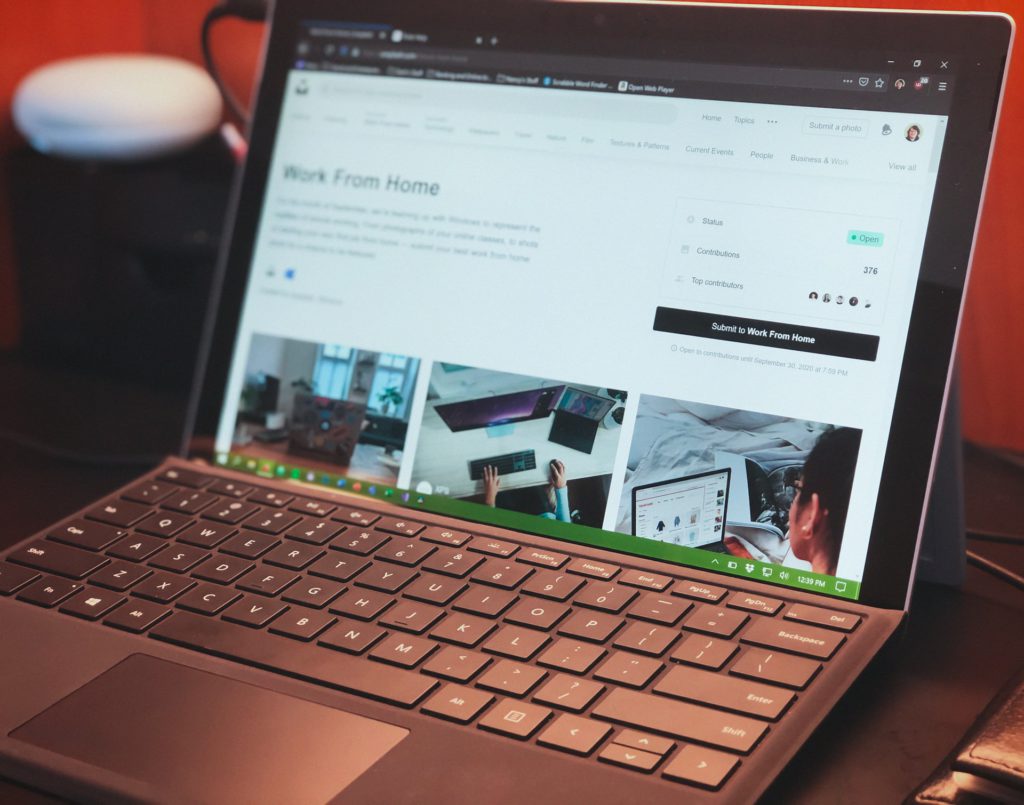The Microsoft Surface Pro 4 is a 2-in-1 device that was released in October 2015. It’s a versatile device that can function both as a tablet and a laptop, making it ideal for both personal and professional use. With its sleek design, high-resolution display and powerful performance, the Surface Pro 4 quickly gained popularity among tech enthusiasts and professionals alike. Whether you’re a designer, artist, student, or business professional, the Surface Pro 4 offers a wide range of features and capabilities that can help you stay productive and creative on-the-go.
As a long-time user of the Microsoft Surface Pro 4, I can attest to its versatility and reliability. Whether I’m using it to take notes in class, create digital art, or work on my latest writing project, the Surface Pro 4 has always delivered the performance I need. I appreciate the device’s lightweight design and compact form factor, which makes it easy to carry with me wherever I go.

My ‘Bloating’ Situation
While the Surface Pro 4 may seem like the perfect device for productivity and creativity, it’s not without its flaws. Unfortunately, I had a less-than-stellar experience with the device when the built-in battery started to bloat. As it turns out, I wasn’t alone – there are numerous reports online of similar issues with the Surface Pro 4. To make matters worse, Microsoft refused to support or help me with this issue, citing the fact that my warranty had expired.
In my situation, it was crucial that I stop using the Microsoft Surface Pro 4 as quickly as possible. Not only is it a serious safety hazard, but it can also cause further damage to the device if left unaddressed. Unfortunately, my work revolves around needing access to a computer all the time, so taking action on this was a top priority. To make things more challenging, this happened during the middle of the 2020 global lockdowns.
So as much as I loved my Microsoft Surface Pro 4, it was time to say goodbye to my bloated buddy. Sure, I could have attempted to fix it, but I’ve always been a “treat yourself” kind of person. Plus, let’s be real, this was 2020 and my Surface Pro 4 was starting to feel like a flip phone in a world of smartphones. So, after shedding a tear or two for my old pal, I decided to upgrade to something new and shiny that won’t blow up on me (fingers crossed).

New computer time! But where do I start???
After parting ways with my beloved Surface Pro 4, I dove headfirst into seeing what is available out in the market. I was determined to find the perfect replacement that would cater to my every needs. I spent countless hours researching and reading reviews like a kid in a candy store. I must admit, it was pretty exhilarating. But then again, I’ve always had a thing for specs. From processing power to graphics cards, I compared every little detail to make sure I found the computer that would make me feel like a boss.
A few key considerations or factors that helped me in my decision are listed below. Hope this may help you as you look at what computer you may want to buy in the future.
- Operating System: Decide whether you prefer Windows or macOS (or Linux if that’s your cup of tea) and ensure that your new computer supports your preferred operating system. A lot of the factors below is heavily influenced based on this key initial decision.
- Form Factor: Do you prefer a laptop or desktop computer? Laptops are portable and can be taken with you on-the-go, while desktops offer more customization options and can provide more power for demanding tasks like gaming or video editing.
- Processor: The processor is the “brain” of the computer and can impact its performance. Look for a processor with enough power to handle your workloads. For example, if you’re a graphic designer or video editor, you may need a more powerful processor like an Intel Core i7, AMD Ryzen 7 or Apple Silicon chipsets.
- RAM: The amount of RAM in your computer impacts its multitasking ability. For most users 8GB RAM should suffice, but if you run memory-intensive applications like virtual machines or do a lot of multitasking, consider upgrading to 16GB or more.
- Storage: Consider how much storage you need for your files and applications. Solid State Drives (SSDs) are faster than traditional Hard Disk Drives (HDDs) and are recommended for most users.
- Graphics: If you’re a gamer or work with graphics-intensive applications, you may need a dedicated graphics card.
- Budget: Set a budget for your new computer and compare different models to find the best value for your money.
One factor that is less important for me, but could be for you, is the brand. Obviously if you want to use macOS, then you only have one brand choice – Apple. But if you use Windows, then you have a long list of good & not-so-good brands to choose from. While I won’t go into details of each and every brand, the brands I do trust and personally consider are Dell and ASUS.
Wrapping up
In the end, saying goodbye to my Microsoft Surface Pro 4 was bittersweet, but it was time to move on to bigger and better things. After weighing my options and evaluating my needs, I’m excited to share that I’ve found the perfect replacement computer. But you’ll have to stay tuned for my next article, where I’ll spill all the juicy details on my new tech toy. Until then, I bid farewell to my bloated buddy and look forward to a brighter future with my new computer by my side.

